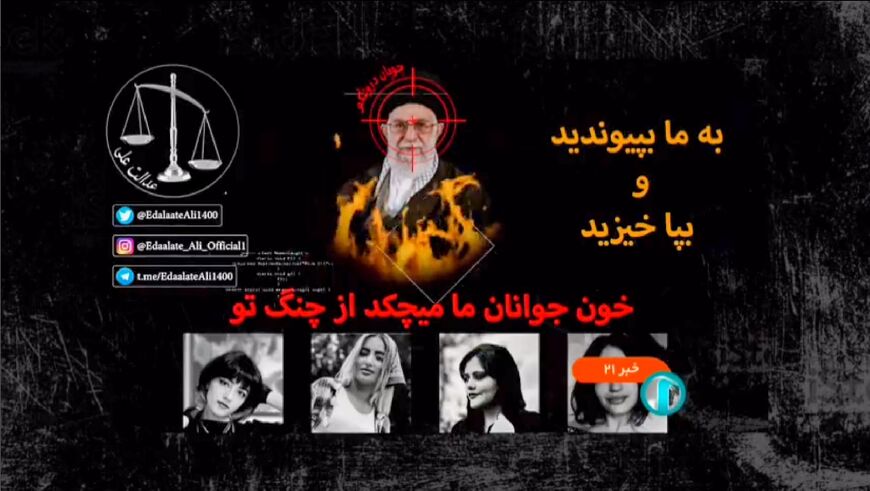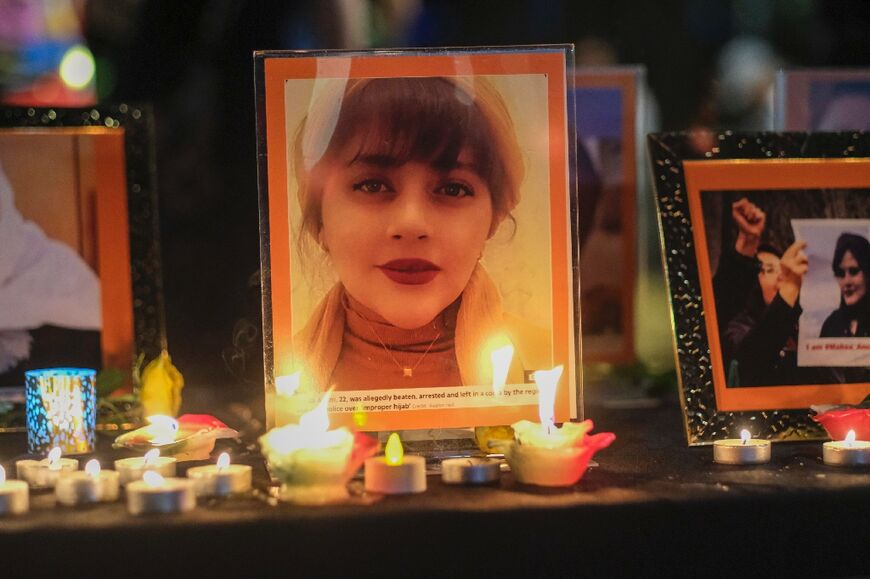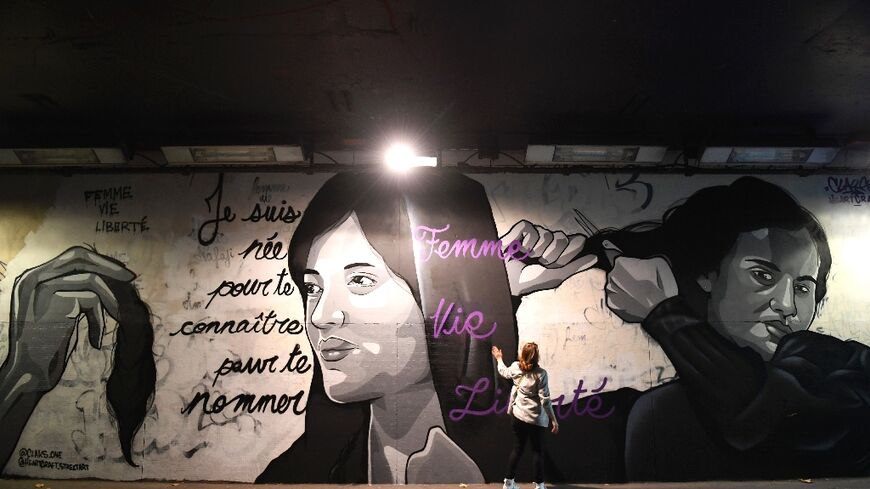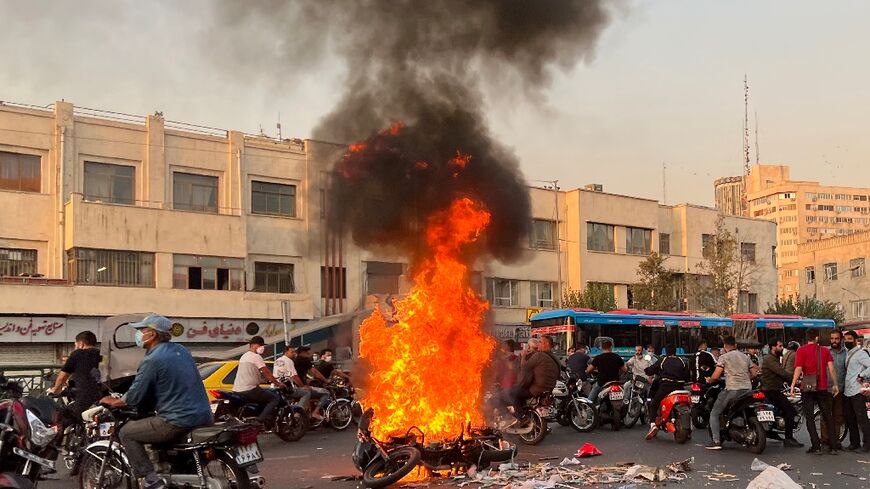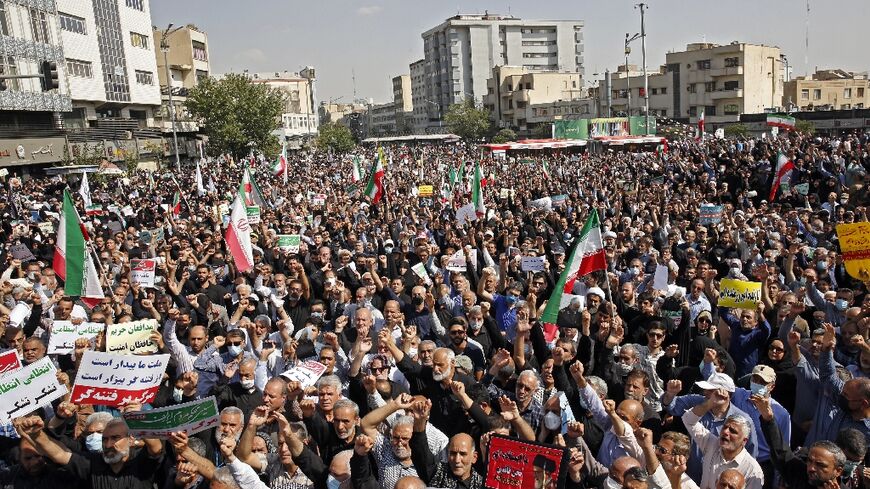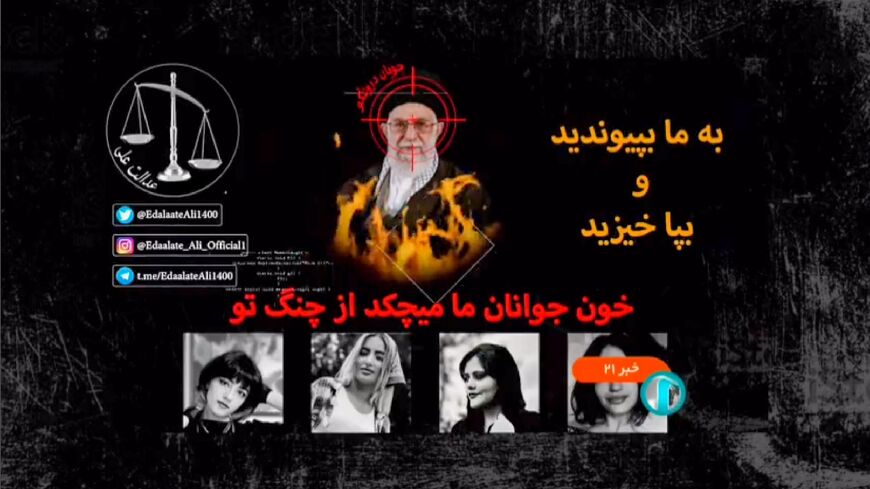Month of anger in Iran over woman's death in hijab arrest
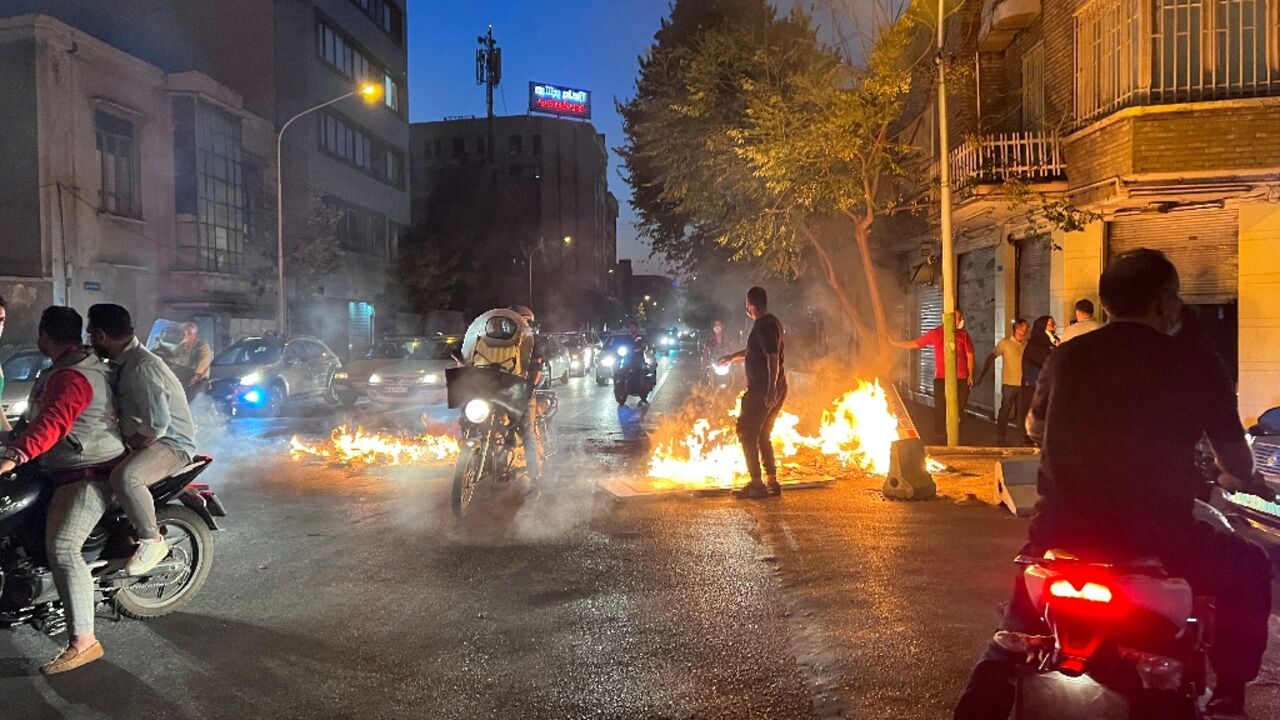
One month ago, a 22-year-old woman was pronounced dead after she had been detained by Iran's notorious morality police for alleged violations of the Islamic republic's strict dress code for women.
Mahsa Amini's death in hospital on September 16, three days after her arrest, sparked the biggest protests in Iran in years.
Young women and girls have defiantly removed their Islamic headscarves, or hijabs, in standoffs with the security forces that have left dozens dead, according to human rights groups.
Here is a timeline of the events:
- Sept. 13: Arrest -
Amini is visiting Tehran with her family when she is detained by the Gasht-e Ershad (Guidance Patrols), the police unit that enforces strict dress rules for women, including the compulsory headscarf.
Her brother Kiaresh tells the Iran Wire news website that while he was waiting outside the police station for her an ambulance drove past, rushing her to hospital.
Tehran police say she "suddenly suffered a heart problem" and release CCTV footage appearing to show her collapsing in the police station.
- Sept. 16: Death -
On September 16, after three days in a coma, Amini is declared dead.
Rights activists say she suffered a fatal blow to the head while in police custody, a claim echoed later by a relative of Amini living in Iraq, but denied by officials.
President Ebrahim Raisi orders an inquiry.
- Sept. 17: First protests, burial -
Amini is buried in her hometown of Saqez in the Kurdistan province of northwest Iran on September 17. Police use tear gas after some residents demonstrate.
- Sept. 18: Social media buzzes -
On Twitter, the hashtag #Masha_Amini clocks up more than one million tweets, including numerous videos of Iranian women cutting their hair in protest over her death.
- Sept. 19: Tehran erupts -
On September 19, protests break out at several Tehran universities.
- Sept. 20: First deaths -
On September 20, three people are reported killed during protests in Kurdistan province.
Videos posted on social media show women removing their veils and chanting "Woman, life, freedom" or "Death to the dictator", a slogan directed at Ayatollah Ali Khamenei, Iran's supreme leader.
A 16-year-old girl, Nika Shahkarami, goes missing in Tehran and is later found dead.
The authorities claim she fell off a roof, but her mother says she was killed by the security forces after attending an anti-hijab protest.
On September 21, police use tear gas to disperse crowds of up to 1,000 people in rallies in cities including Mashhad, Tabriz, Isfahan and Shiraz.
- Sept. 22: Social media muzzled -
On September 22, Iran blocks access to Instagram and WhatsApp, the two apps most widely used in Iran, and imposes drastic restrictions on internet access.
The United States places the morality police on its sanctions blacklist.
- Sept. 23: Counter-demonstrations -
Thousands take part in pro-hijab counter-demonstrations in Tehran and other cities, in response to a call from the authorities.
On September 25, President Raisi vows "decisive action" against the wave of unrest.
A day later, Iran arrests more than 1,200 protesters.
On September 28, Amini's parents file a complaint over their daughter's arrest and demand that the authorities release all images and videos of her in custody.
On October 1, solidarity protests are held in dozens of cities around the world.
- Oct. 3: Khamenei accuses US -
On October 3, Khamenei accuses arch-foes the United States and Israel of fomenting the unrest.
The United States and European Union vow new sanctions.
On October 7, Iran's judiciary denies reports that security forces killed another young woman, 16-year-old Sarina Esmailzadeh, at a rally in the city of Karaj, claiming she committed suicide.
- Oct. 8: Death by illness -
An official medical report concludes that Amini's death was caused by illness, due to "surgery for a brain tumour at the age of eight", and not police brutality.
Activists supporting the protests hack a state television live news broadcast, superimposing crosshairs and flames over an image of Khamenei.
- Oct. 12: More than 100 charged -
On October 12, the judiciary says it has charged more than 100 people over the protests in Tehran and the southern province of Hormozgan.
EU members agree to impose sanctions on Iran over its crackdown, according to EU diplomats.
- Oct. 15: Prison fire -
On October 15, a fire and clashes erupt at Tehran's notorious Evin prison, where hundreds of those detained during the demonstrations over Amini's death have reportedly been sent.


